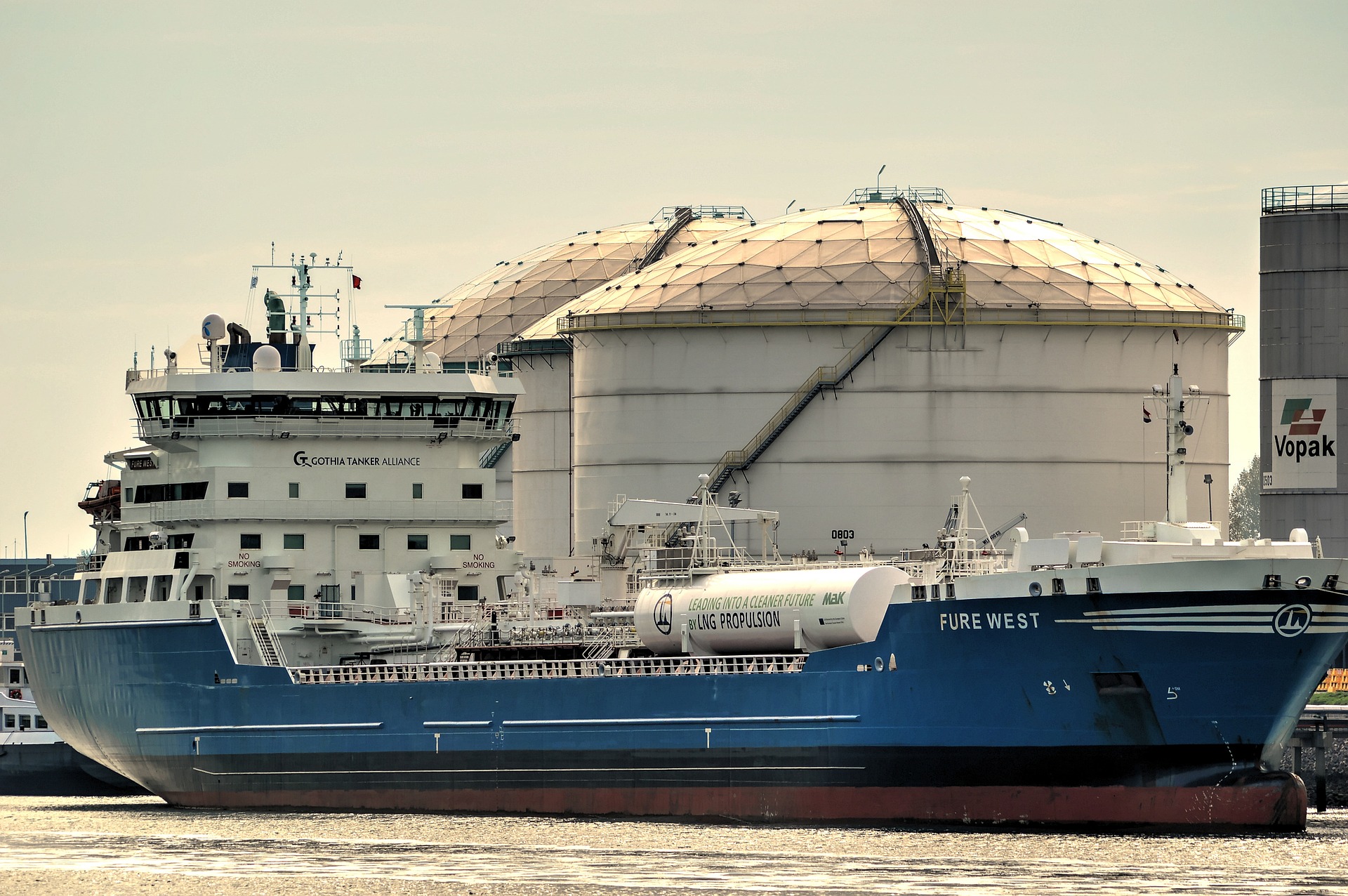
The global LNG market showed strong even if tumultuous growth during 2021. Demand rebounded post-COVID driven by easing restrictions, a long and cold winter, and intensifying decarbonization efforts. Record-low inventories and damp supply growth resulted in a tight LNG market that will continue well in 2022. China surpassed Japan as the largest buyer of LNG and emerging markets in Latin America and Asia are expected to drive further demand growth. The United States surpassed Australia as the largest exporter of LNG in December 2021 while export from some LNG exporting countries is likely to fall. Collectively, the LNG team at ADI Analytics sees 9 major themes for 2022:

- Global LNG supply and growth will be led by the U.S. that surpassed Australia as the largest exporter this year
Global supply and shipping constraints and cost-advantaged shale gas resulted in the U.S. claiming the number one LNG exporter spot in 2021. U.S export capacity peaked at 88 million tons of LNG in 2021 followed by Australia and Qatar that have export capacities of 87 and 79 million tons, respectively. Qatar will not be able to export more until the North Field expansion comes online. The U.S. is expected to lead the market for a while mainly with multiple projects coming online.
- Cheniere, Tellurian, Venture Global, and Golden Pass are expected to drive U.S. LNG exports in 2022
Expected expansions in 2022 will add approximately 20 million tons of export capacity
- Sabine Pass LNG Train 6 with 5 million tons per year capacity
- Sabine Pass LNG may expand capacity by 10% across all six of its trains amounting to around 3 million tons per year expansion
- Corpus Christi LNG also man expand capacity by 14% across all three of its trains amounting to around 2 million tons per year expansion
- Calcasieu Pass LNG start-up with 10 million tons per year capacity
- Golden Pass LNG Trains 1 to 3 with combined capacity of 18.10 million tons per year is under construction to start-up by 2024 or 2025
- In addition, FID is targeted for Driftwood LNG, Louisiana with 27.6 million tons per year capacity, Freeport LNG train 4 in Texas with 5.1 million tons per year capacity, and Corpus Christi LNG Stage III with a capacity of 11.5 million tons per year in Texas, totaling 44.2 million tons per year
- Other approved projects that have completed FEED are Plaquemines LNG Phase 1 and 2 with combined capacity of 24 million tons per year, Texas LNG with capacity of 4 million tons per year, and Rio Grande LNG with 27 million tons per year. A successful 2022 for U.S. LNG will surely impact the decision on whether these projects will go forward.
- Global LNG demand is expected to grow by ~3% in 2022 following a ~7% growth in 2021
Global LNG demand grew from 360 million tons in 2020 to 384.5 million tons in 2021, a 6.8% year-on-year growth. It is expected to increase to 396 million tons in 2022, a growth of 2.9% year-on-year. China surpassed Japan as the largest buyers of LNG in 2021 and will remain so in 2022. A disparity in slowing or stagnant LNG demand growth in developed economies such as Japan and Western Europe and rising demand growth in emerging economies such as China, India, and other countries in Asia as well as Africa will result in falling LNG demand growth.
- Gas demand in Japan fell during 2021 while demand growth in South Korea slowed down
Growing dependence on nuclear power in Japan and nuclear as well as coal-based power in South Korea impacted their LNG imports that amounted to nearly 76 million tons and 40 million tons, respectively, in 2021, compared to 75 million tons and 36 million tons, respectively, in 2020. Gas demand in Japan is expected to remain flat during 2022 whereas South Korean gas demand is expected to grow as the government pushes away from coal-fired power generation. A similar push away from coal in other emerging economies will offset Japan’s stagnant LNG demand.
- Global LNG demand will be driven by China mainly replacing coal for power but rising domestic coal production may hinder LNG imports
China imported nearly 83 million tons of LNG in 2021, 21% higher than 2020, mainly driven by advancement in the residential and commercial sectors that resulted in natural gas grid expansion. China will continue to retain the number one importer spot in 2022, however, the gas supply crisis and high prices may force China to reevaluate their dependence on imported LNG.
- Emerging economies in Asia will support global gas demand growth offsetting demand drop in developed economies
Even so, we anticipate this to be a short-term bump with continued dependence on LNG in the medium- to long-term. Pakistan, Bangladesh, and Thailand along with China will be key growth areas driven by rising regulatory pressure for decarbonization. Imports to Indonesia are expected to rise from roughly 4 million tons in 2021 to 4.8 million tons in 2022. Imports to Malaysia will increase by 1.6 million tons to reach 4 million tons in 2022. Imports to Thailand will increase from 6.6 million tons in 2021 to about 7.4 million tons in 2022.
- Many new LNG importers in Asia, Latin America, and Africa are expected to emerge over the near term.
Vietnam, Philippines, Australia, and Sri Lanka in Asia as well as few countries in Latin America – El Salvador, Nicaragua, and Ecuador, and Ghana, Senegal, and Benin in Africa are likely to start importing LNG in the near term.
- LNG woes in Europe will extend to 2022 keeping LNG prices high at $10/MMBtu – $15/MMBtu while continued dependence on LNG in Asia will keep prices at $12/MMBtu – $18/MMBtu
LNG prices were more volatile in 2021 than in the past and touched $10/MMBtu in Asia and $14/MMBtu in Europe. We expect similar high prices and volatility in 2022 because of limited LNG supply growth before 2023/2021, geopolitical challenges with Russian gas supply into Europe, and rapid economic growth coupled by intensifying decarbonization in Asia.
- Growth in small-scale LNG is likely to continue in 2022
Small-scale LNG will continue to be used in applications such as energy storage, peak shaving, city gas distribution, transportation, and remote power. U.S. based Chart Energy recently announced their involvement in small-scale projects across U.S. for energy storage and peak shaving applications. Additionally, they will also provide liquefaction technology for European biofuel provider, Verbio, for biomethane liquefaction. LNG as fuel in marine transport in the Baltics is another driver for small-scale LNG in Europe. Singapore-based small-scale LNG provider, Pavilion Energy, entered an agreement to supply 0.5 million tons per annum (mtpa) to Chinese gas distributor Zhejiang Hangjiaxin Clean Energy. Eagle LNG will supply LNG to a power plant in Aruba from its small-scale LNG plant in Florida. In Nigeria, the planned small-scale LNG import terminal will replace diesel other fuels used for remote power. Gas-to-power developer, New Fortress Energy, will deploy its Fast LNG technology to produce 1.4 million tons per year LNG in the Atlantic coastal basin offshore Mauritania aimed to serve local gas and power markets as well as for international exports. Fast LNG pairs gas liquefaction technology with jack up rigs or a similar floating structure saving time and cost of a similar floating liquefaction infrastructure. New Fortress Energy expects to be able to produce LNG at $3-4/MMBtu and will become operational in about 20 months.
ADI Analytics will continue to monitor, track, and consult in the global LNG market. You can access our insights by subscribing to the ADI newsletter or contact us to learn more about our research.
By Panuswee Dwivedi and Uday Turaga





















